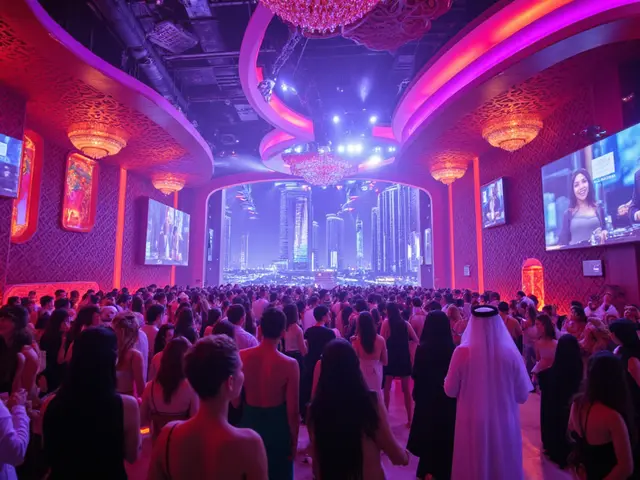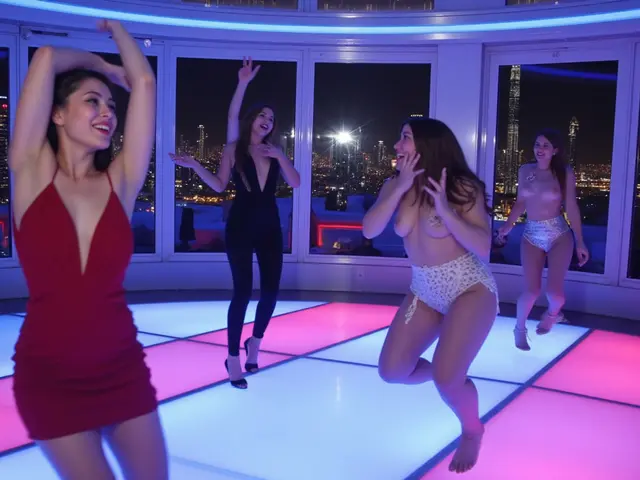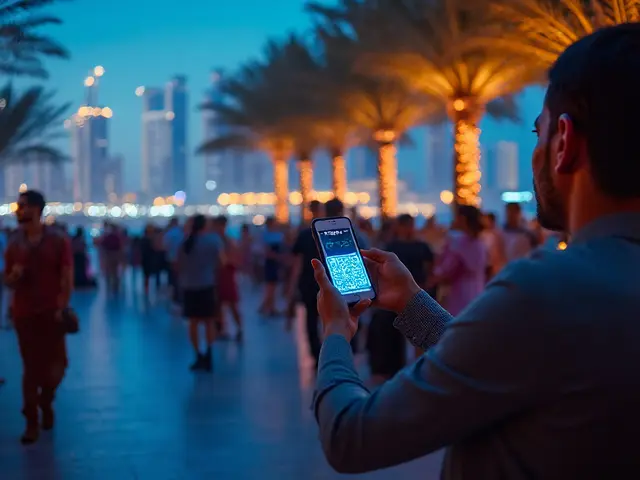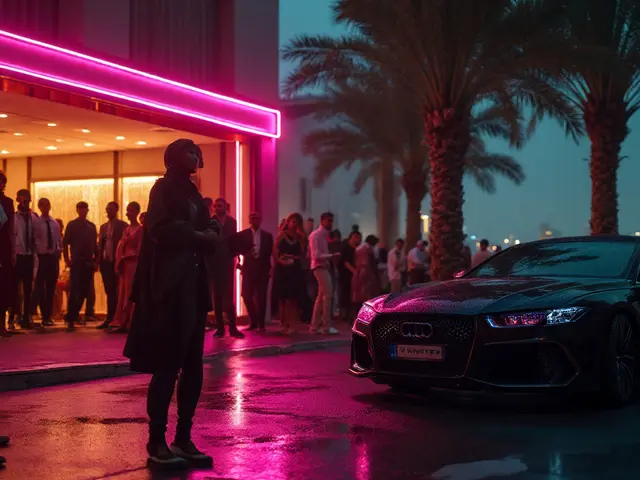If you think Dubai’s skyline can’t surprise you anymore, you probably haven’t seen the Dubai Frame up close. This isn’t just another glass-and-steel tower for showing off on Instagram. No other city has dropped a golden picture frame between past and future quite like this. Hugging the skyline between old and new Dubai, it's as if a giant tourist snuck into the city, snapped the skyline, and left their frame behind. Still, among all Dubai’s architectural stunts, why should the Dubai Frame shoot to the top of your bucket list? Stick with me, whether you’re an architecture nut, a casual traveler, or just here for the city’s wild ideas.
Key Features and Quick Facts
You need to know the quick facts before you plan your adventure. The Dubai Frame stands at 150 meters tall and 93 meters wide, basically as tall as a 50-story building. That’s roughly the height of London’s Centre Point—only this one lets you snap both old and new cityscapes with a single glance. It first opened to wow the public in January 2018, turning heads ever since. The brains behind it? The award-winning architect Fernando Donis, who actually won a global competition to design it—talk about bragging rights! The frame glimmers in gold-colored stainless steel, inspired by the circles found on the old UAE 50-dirham coin. At the top sits a glass sky bridge stretching 93 meters—if your knees are strong, you can look straight down at the world below. The Dubai Frame has quickly become one of the city’s top five most visited cultural attractions, pulling in close to two million visitors every year.
- Height: 150 meters (about 492 feet)
- Width: 93 meters (305 feet)
- Opened: January 2018
- Architect: Fernando Donis
- Main material: Golden stainless steel
- Main feature: Glass sky bridge offering sweeping views
Unlike the towering Burj Khalifa or dizzying Dubai Eye, the Frame cleverly frames the city’s two extremes: to the north, you get a snapshot of Dubai’s old neighborhoods; to the south, a futuristic sprawl filled with shiny skyscrapers. It’s both a masterpiece and a literal window from past to present. You’re not just looking out; you’re stepping right into Dubai’s story.
What Makes the Dubai Frame Unique in the World of Architecture?
Take nearly any famous landmark and there’s a story about its wild beginnings: Eiffel Tower critics called it an eyesore, the Sydney Opera House blew its budget, and don’t even ask how long Rome’s Colosseum took to build. But the Dubai Frame stands out by being both a work of art and a smart piece of urban storytelling.
Fernando Donis’s vision was to create a structure that doesn’t compete with the skyline for attention, but instead, functions as a gateway. With all the other ambitious towers and shapes vying for top dog, this giant rectangle quietly claims the middle ground. Every detail had a purpose—the golden lattice matches patterns found in traditional Islamic designs and the sky bridge lets you walk between eras like someone flipping through an old family album. Even the lifts climb the 48 floors in less than a minute, making the ride up part of the thrill.
There aren’t many structures on earth that give you a history lesson just by looking out the window. From the north, you’ll spot the low-rise, timeworn homes of Deira, the meandering Dubai Creek, and even the old souks—those are the city’s roots. Turn south and the view becomes a parade of concrete ambition: the Burj Khalifa, Emirates Towers, and all those futuristic silhouettes. This duality is why the Frame has ended up as an architecture lover’s pilgrimage spot. It isn’t just about height or sparkle—it’s about perspective.
“We thought Dubai didn’t need another tall building, but a strong idea to connect time. The Frame became a metaphor between past and future.” – Fernando Donis, Architect (Dubai Frame Competition Interview)
Of course, folks still debate its origin story. Donis famously disagreed with the final implementation, saying it strayed from his original intent, yet the end result has won worldwide acclaim. The Dubai Frame even snagged the title of the world’s largest frame in the Guinness World Records in 2019.
If you’re at all into tech, you’ll love the engineering behind it. The sky deck is made from extra-tough triple-laminated glass. It’s slippery on your senses but absolutely safe on your feet. Even on hot July days (think 45°C plus), climate control tech keeps the view comfy and fog-free, so your camera lens can stay clean and unfrosted.
Why Visit: Unmatched Views and Unexpected Experiences
Let’s talk about the experience. It’s not your average tourist trap—there’s real excitement in the ride up and what happens inside. Once you’ve snagged your ticket and made it through the digital exhibits downstairs, get ready for the spectacular glass elevators. They zoom you from the base to the sky deck in 75 seconds flat, all the while giving you a front-row seat to Dubai’s ever-expanding patchwork of neighborhoods.
The moment those elevator doors part at the top, you feel the rush. You’re floating above Zabeel Park, facing an unobstructed city panorama. On a clear day, the Gulf sparkles out to one side while the misty outline of distant dunes looms on the other. Walk out onto the glass floor if you dare—it’s see-through, so you’ll literally feel like you’re suspended in midair. If you have a camera or smartphone, this is the moment for jaw-dropping shots.
It’s not all about heights and selfies, though. The lower levels pack in digital storytelling exhibits: interactive screens take you through a ‘Past Dubai’ gallery shaped like old Emirati neighborhoods—look for clay facades, ancient water pots, and scenes from the 1950s. Past gives way to ‘Present Dubai,’ with a 3D model of the city that literally glows, showing how much Dubai has exploded in the last 40 years. But the bit that usually leaves a mark? The ‘Future Dubai’ zone, which uses virtual reality to whisk you 50 years ahead. Imagine robots cleaning streets, solar airships floating over buildings, and smart homes so clever, even my cat Basil could probably operate them.
Here’s a pro tip: the best lighting for photos is just before sunset when Dubai is painted in dreamy gold and pink. If you time it well, you’ll get the city glittering against both fading daylight and rising neon.
Planning Your Visit: Tickets, Tips, and When to Go
Now let’s get practical. Tickets for adults usually cost 50 AED (roughly £10), which is a bargain for the show you get. Kids aged 3 to 12 enter for half price, and the little ones go free. You’ll need to book online—especially during weekends or tourist season as spots fill up quickly. Don’t show up hungry: there’s a café on the sky deck, but options in the surrounding park are limited, so pack a snack or plan a meal nearby.
Peak months are November to March when the weather actually lets you breathe outdoors. From April to September, the city sizzles, but you’ll find thinner crowds (and more available slots for last-minute tickets). Try visiting first thing in the morning or at sunset for the best experience without crowds elbowing for a spot by the glass.
Want to get there in style? Dubai’s Metro Red Line gets you within a 15-minute walk to Zabeel Park Gate 4, the main entrance to the Frame. Taxis are everywhere and affordable, but plan a little extra time with Dubai’s legendary traffic. The area around the Frame also opens up to Zabeel Park, which is worth wandering—especially if you want picnic space, shady trees, or to let kids burn off some energy.
If you’re feeling energetic, the lower plaza offers everything from digital souvenir shops to art installations that change with each new season. Wheelchair access is excellent, with lifts and ramps all the way to the sky deck. Even prams are sorted. This makes it a family-friendly spot way beyond the tourist norm.
For an idea of what to expect crowd-wise by time of week and day, check out this handy table:
| Day | Morning (8 am – 11 am) | Afternoon (12 pm – 4 pm) | Evening (5 pm – 8 pm) |
|---|---|---|---|
| Weekdays | Low | Medium | Medium |
| Fridays | Medium | High | High |
| Saturdays | Medium | High | Very High |
Oh, one last thing: security is tight, similar to an airport. Expect to go through scanners and bag checks, so give yourself a 15-minute buffer before your entry slot.
Comparing Dubai Frame to Dubai’s Other Must-See Landmarks
Is the Dubai Frame the best viewpoint in town? Hard to say—it depends on your taste for adventure and storytelling. Here’s how it squares up against Dubai’s other headline-grabbing icons:
| Landmark | Height | Key Experience | Best For | Price Range |
|---|---|---|---|---|
| Dubai Frame | 150m | 360° city views, history meets future | Architecture buffs, families | Low |
| Burj Khalifa | 828m | World's highest observation deck | Thrill-seekers, icons fans | High |
| Dubai Eye (Ain Dubai) | 250m | Observation wheel, JBR views | Couples, novelty lovers | Medium |
| Burj Al Arab | 321m | Luxury high tea, wow-factor tours | Luxury seekers | Very High |
While the Burj Khalifa wins on sheer height and sky-high drama, the Frame tells a **story you can step into**—it’s the only spot designed to frame Dubai’s rise from desert port to megapolis. Plus, the price won’t make your wallet cry, and there’s minimal queuing if you plan ahead. Want it all? Do both Burj Khalifa and Frame in the same day for the ultimate skyline geek-out.
Architecture changes how we see places, and the Dubai Frame proves you don't need to reach the clouds to turn heads. My advice? Don’t just scroll by. Grab a ticket, claim a photo, and make your friends at home jealous with a new angle on one of the world’s boldest cities. After all, in Dubai, even the sky needs a frame sometimes.





